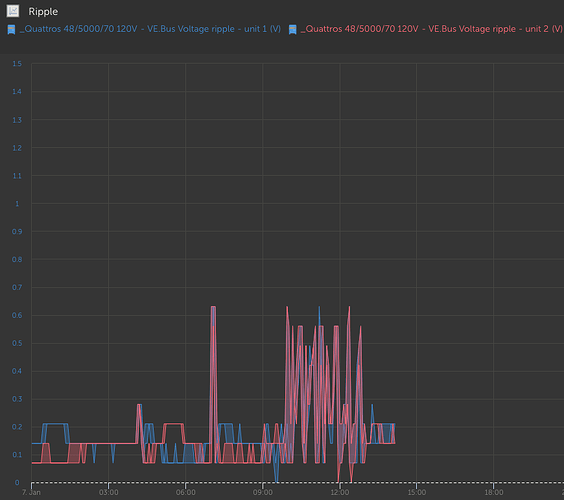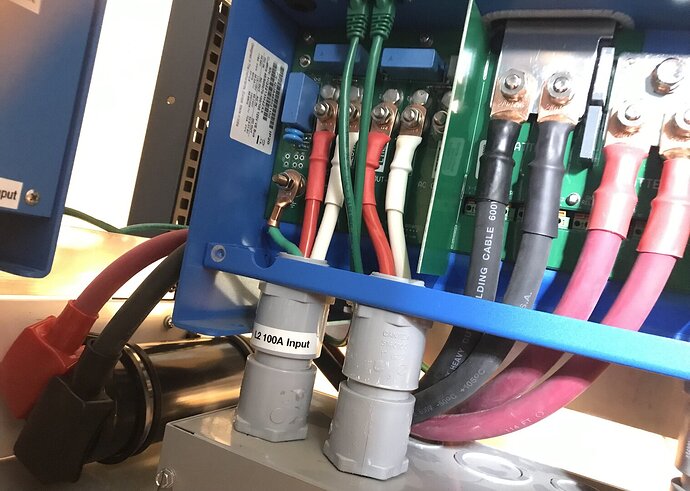Hi Rick,
Thanks for the compliment.
Yes we did/do measure a lot, as this test is still running.
Over the busbar before dividing to the 2 batteries we have placed 2 Licap 18V 62F Ultracapacitors in series (24V system, 36V capacity, 32V max charging voltage) already years ago, these “boost” up to about 80A when we start heavy equipment.
This was our bog standard system for years but we noticed secondary ripples (3 phase), and a supercapacitor is not really good for that.
So, we placed first these 3 Kemet ALS71A274NT063-ND capacitors right on the busbar of each inverter with silver cables (speaker cables), these produce without load about 6-8A and when we start heavy equipment about 43-45A just for a flash second, just over the limit of 34A.
Then we mounted 2 Kemet ALS71754QT040 capacitors on the busbar to the batteries and the positive side of this busbar is cut and a IHXL1500VZEBR68M5A
mounted in between.
This since its an inverter-charger so this ripple is “handled” while inverting but also while charging, a so called CLC-circuit for 2 directions in this case.
These also use about 5-6A without load and with heavy equipment about 35-40A.
That created that the 3 other capacitors are reacting slightly less and are now also at about 35-40A when starting heavy equipment.
Under load, after start, all capacitors do 12-18A and the ripple is never higher than 0.2V.
Your TDK capacitor is from the B41xxxx-series 63V, correct, these can handle about 23-25A max, so watch out to run long time on full power as these can get very hot, also, it reduces lifetime by 5-fold or so…
I would recommend to place Kemet ALS70A334QS063 directly over the busbar connections of your inverters, this, as you have a way bigger ripple to solve than our system, these can handle 40A with ease and covering your issue.
Also, you have 48V, ours is 24V, meaning, the choice of big capacitors is limited to 63V and/or above, leaving you with the above mentioned capacitor (in stock) as I write.
But, again, 1.4Vrpp is quite high for a low amperage system, I would check cabling connections once more really good, meaning, take these loose, clean with P400 sandpaper (for prepping cars before paint), then scotch brite and then reconnect, you will be surprised what that does before investing in capacitors and chokes.
What is your VDC-loss?, between the quattro voltage sense and quattro voltage, this we monitor as well.
Here you can see the 3 inverter voltages and the voltage sense of the master, that’s our safety to monitor cable connections, etc, before things get out of hand.
Jeroen.
VRM Portal - Victron Energy, no password needed.












